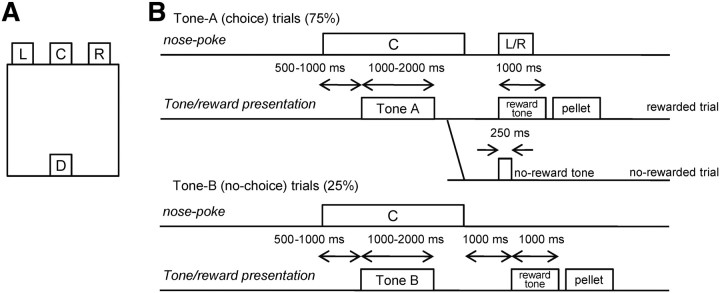Figure 1.
A, Schematic illustration of the experimental chamber. The chamber was equipped with three holes for nose poking (L, left hole; C, center hole; R, right hole) and a pellet dish (D) on the opposite wall. B, Schematic representation of conditional free-choice task. After a rat maintained a nose poke in the center hole for 500–1000 ms, one of two discriminative stimuli, tone A or tone B, was stochastically chosen and presented. For tone A presentation, the rat was required to perform a left or right nose poke (choice trial). After the left or right nose poke, a sucrose pellet was delivered stochastically with a certain probability depending on the rat's choice (for example, 90% reward probability for the left choice and 50% reward probability for the right choice). Reward availability was informed by different tone signals, which were presented immediately after the left or right nose poke. The reward probability in choice trials was fixed in a block, and the block was changed to the next block with a different reward probability when the average of the last 20 choices reached 80% optimal. One of four types of reward probability [(left, right), (90, 50%), (50, 90%), (50, 10%), and (10, 50%)] was used for each block. For tone B presentation, a pellet was delivered deterministically 1000 ms after the exit from the center hole (no-choice trial).

